Posts Tagged ‘Shavings’
Putting Pen to Paper
I just finished putting a pot of chicken soup on the stove, made from a simmered down homegrown chicken carcass cooked months ago and frozen waiting for such a day as this. An April storm rages outside; lightening illuminates the house and thunder crashes so loud it shakes the windows, making the cat run for cover. There is a warm fire crackling and popping near where I write; glowing hot with wood collected in the fall. It is still keeping us warm. My new dulcimer stands in the corner waiting for me to pick it up and strum the new cords I am teaching myself. We are happy and content to stay indoors and revel in simple pleasures on this wet spring morn.
What a life we have created for ourselves! A half finished flannel quilt sits patiently on a makeshift sewing table, made from scraps collected over time during shopping trips to thrift and second hand stores. There are lambs outside; the last vestiges of Brianne’s show career. A new batch of meat ducks huddle in a pen of wire, bedded down on a thick layer of shavings, keeping the chill of this stormy day at bay. Sophie, the Sebastopol goose, sits on a small clutch of eggs, ignorant of the fact they will never hatch…they are not fertile. But, she may be a mother yet. When I gently pulled back the warm covering of straw on top of the nest I found three chicken eggs. She must have gathered them from a wayward hen and made them her own. They have a better chance of hatching.
There are eggs in the fridge, laid by the hens who roam the yard. There is lamb and chicken in the freezer as well; all raised here on our suburban farm and butchered by the people who cared for them. Homemade sausage lays frozen in patties and links; taught to us by our friendly butcher Kent. Aside from the meat we have raised we’ve also baked bread from scratch, canned jams and relishes, peaches, made cheese from fresh goat’s milk. The honey we use comes from “the bee man” who pollinates a family farm. There are two trucks and a livestock trailer parked in the drive, waiting for the next farm chore or livestock show excursion.
We’ve held just hatch chicks in our hands, offspring from our little flock this time last year and watched as new born kits wriggle in the warmth of a soft fur bed. We’ve grown a garden full of vegetables and picked pumpkins that would make Cinderella weep with joy. We’ve fished for our supper and learned to shoot with both gun and bow. We’ve laid in bed on a cool summer morning and heard the songs of birds that call our farm home. We’ve stopped dead in our tracks as the cry of a coyote shatters the dark silence of our nightly rounds. We’ve built with lumber, sewn clothes, knitted scarves and quilted blankets to keep us warm in winter. And, we’ve captured it in a blog. We have customers that buy our products and seek our knowledge.
But there is still much left to do. We’d like to feel the biting cold on our face as a sled and dogs pulls us through the blue glow of a winter morning. We’d like to drive a carriage and use horse power instead of machine power to work a farm. And, we’d like to see dogs run the yard once more. We’d like to restart our sheep flock, long ago lost to a pack of feral dogs and feel the thrill of bringing a new crop of lambs into this world. We’d like to start a CSA of wool and meat and vegetables and fruit. And, we’d like to share what we’ve learned with others.
Tonight our plans are quiet. No hot dates or people to impress with shallow small talk of inconsequential matters. No…tonight is dedicated to this small suburban farm, plans for the future and life lived simply; a life that didn’t even exist a few years ago. Tonight I’ll help a new college student follow her dream and work on a few of my own. I’ll learn about raising and processing a pig, making plans for a new pig pen and I’ll read about heritage cattle to determine if this will be a new addition to our farm. This is normal, at least for us. This is everyday life for us.
I’ve been told by family and friends that I’m a fool to be wasting my time and energy on things that can be bought just a few miles from my home, that don’t require trudging out in the rain or sweating in the sun. I must be a fool then, to trade the shallow wasteful easy comforts of modern society to live this way, to do all this and dance at dusk to the sounds of sweet mournful instruments long past forgotten. They can say what they like. I wouldn’t change a thing, not for anyone. This is our life—sometimes messy, sometimes hard, sometimes sad. But, we like it. It suits us.
We may not have the riches of some and we certainly aren’t surrendering ourselves to the simpering, giggling, nauseatingly fake form of womanhood that so many feel necessary. But we are pretty dang happy tonight. We feel like the richest women in the world. Why you may ask, do we feel this way. Two simple reasons:
One: I always wanted this life and knew it could happen, not hoped but knew, and
Two: I wrote it down.
May sound strange, but it’s true. I believe this with every ounce of my being because I’ve seen it happen time-after-time. Years ago I was reading a piece written by a well-known motivational speaker. He had written about a “Dream Book”. A place to keep, write, draw and plan ALL the dreams you have for your life. He went on to state that 98% of people never plan or make goals for their lives, and even fewer take the time to write those dreams or plans down. Of the people to do take the time to put pen to paper 90% actually achieved their written goal. Amazing, right? There’s just something about making a written commitment to yourself. It makes the dream more real, more achievable. I strive to be part of the 90%
When I was going through my divorce I knew I wanted a place where we could have animals and gardens and trees. I wanted a REAL wood burning fireplace, a nice kitchen where I could make dinners from scratch, and most of all zoning that would allow us to do all the things we wanted without the prying eyes of a small minded HOA. So—I took pen to paper and wrote it all down. I drew out a barn to house the animals we would raise. I laid out cutting gardens, vegetable gardens, trellises, arbors, even a green house. I collected magazine clippings of flowers I would grow, recipes I would make and animals I would raise. All in anticipation that “one day” I would find what I was looking for. I carried my “dream book” with me everywhere so I could write down new ideas that came to mind. And I think because it was so much a part of me, so close to me at all time those ideas and dreams pushed me to never give up. But, time and trial can take its toll. I was discouraged, tired, pushed to my breaking point. Divorce is not easy folks. I WAS giving up, but trying not to. I was resigning myself to a life less than I wanted, but still holding out some hope that I would find what I was looking for.
Life is strange. It happens when you least expect it. I was sitting in a small café with my sister. It was Sunday. I had decided to take a break from the search for a home that would give us the life we so dearly wanted when the couple seated next to us got up and left. Lying on the table was the Sunday paper. I stared at it a while and then picked it up. I didn’t look through it for the longest time, just held it looking at the front page. I guess I was deciding whether or not to risk disappointment. But, I did open it. Thumbed through the housing section, reading about all the grandiose homes that were not only over my budget, but would not give me the life I wanted, until the bottom corner of the last page caught my eye. It was a barely noticeable ad for a house just outside of town. The ad said “small farm”. I looked at sis and she instinctively knew without me saying a word. She grabbed the paper and found the ad. We both sat there, silently staring at each other. We knew. We just knew.
We paid our bill and left. I was breathless driving to the address; excited, afraid, unsure. I had never bought a home before, never had a mortgage. I wasn’t even sure I could do it. We walked through the front door and my heart stopped. IT WAS A WREACK!! The house had been a rental for 12 years and it showed. But…it had a big wood burning fireplace, almost 3-feet wide, and land, enough for barns and gardens and greenhouses. The kitchen needed work, but it was roomy with lots of space. This wasn’t the little farm I wrote about in my dream book, but it had bones to build on and room to grow.
I say all this because I want you to know this doesn’t happen by magic. This farm didn’t just fall into my lap. It was thought of, conceived of and dreamed of. It wasn’t given to me either. I worked hard for it, scrimped and saved and did without to make it work. I had to be tough, wheel and deal and put people in their place when they tried to cheat me. But I pulled it off, paycheck to paycheck, a little at a time until it grew into something wonderful. There is a barn we build ourselves, fences, an orchard, berry patch, flower gardens, vegetable beds and grape vines; and—a new kitchen. Many hands have helped to make this farm possible and many hands have enjoyed the fruits of their labor. If a single mom raising a child alone can buy a home and build a farm out of a suburban lot so can you. I promise.
I guess the moral is…if you want your own land, want your own farm then please sit down and put pen to paper and write it all down. All the wants, all the dreams, all the crazy notions. Carry it with you and keep it close to your heart. It may take years before you can dance at dusk on your own land with chickens scratching in the background, but those years are coming anyway—why not have a farm at the end of them.
And keep dancing at dusk, folks. It couldn’t hurt.
3 Days to Food Security
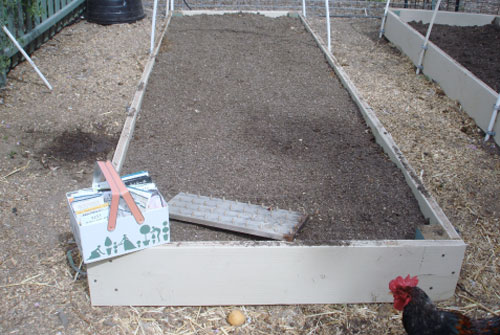
On Friday, Brianne and I drove to a nearby horse farm to collect a load of aged manure to fill the raised beds I made back in January. It was a horrible day for working outside, another wind storm blew through our area, kicking up dust and dirt, making it hard to breathe let alone see. But, no progress could be made on the garden until the beds had been filled with a mixture of manure, compost and soil. We don’t produce enough compost so I always need to augment what we have, and given the chance I’d rather shovel for free than buy what I need. As the wind howled, we shoveled rich black composted manure, straw, shavings and hay into trash cans we loaded in the back of the truck.
When we returned home each can was unloaded and dumped into two 4×12-foot raised beds, 3 cans per bed. Afterwards, each manure pile was raked level and large clumps were broken up, then a layer of mixed compost and soil was added and the whole dirt, compost, manure pudding was mixed up and re-leveled.
By the time we finished the wind was blowing about 50mph. Brianne and I had so much dirt in our eyes, on our face and in our hair we could have planted seeds on ourselves instead of in the garden. We put our tools away, brushed off the dirt and headed into the house for a hot shower and a warm meal.
The next day I pulled out all my seeds to sort and organize. I’m usually not one for throwing seeds away, but this year I decided a good seed box cleaning was in order, so I sorted the seed packets by the year they were packaged for, finding several dating back to 2001; anything older than 2009 will go into my compost bin garden. Appropriately named because any time I throw seeds into the compost (which isn’t often), they end up growing, which is why I hate throwing out seeds. Read the rest of the story »
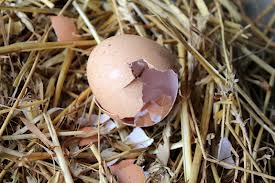
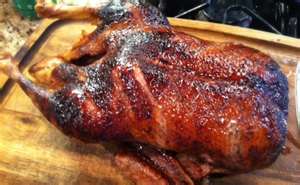

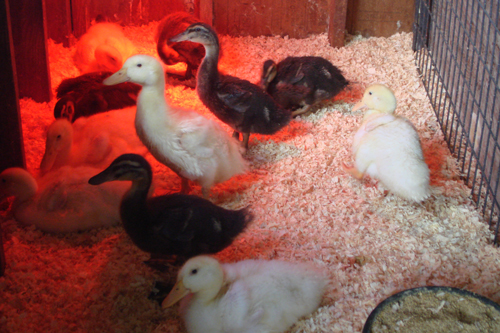


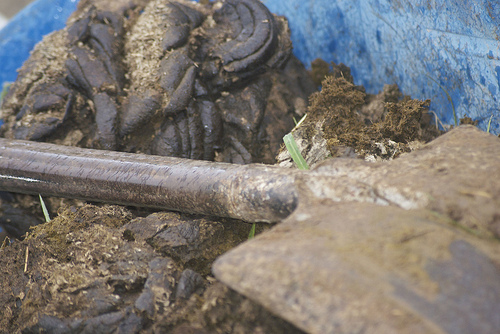
Recent comments
Aenean nonummy hendrerit mauris. Phasellus porta.